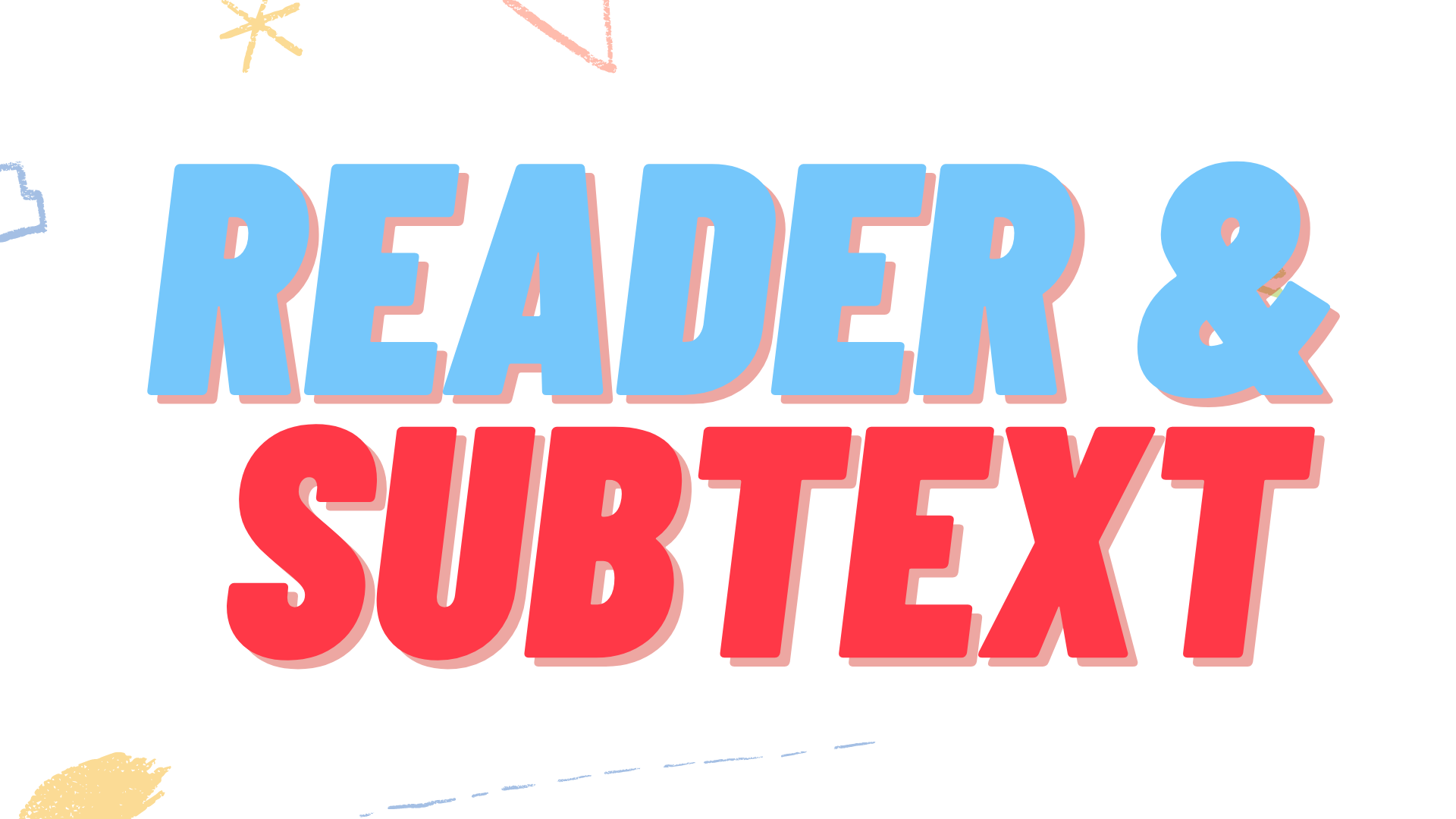Subtext: The Hidden Way to Engage Your Reader

What is Subtext?
Subtext is the meaning behind a character’s action or dialogue. The strength of subtext lies in the way the reader participates in the story. If you’ve been following me for a while, you know that dialogue is another way of illustrating action in your story.
Subtext works in your story in several ways:
1. characters say one thing when they think, feel, or act in another way
1. dynamics that characters may not be consciously aware of
2. thematic symbols motifs, meanings that can be derived from the text even if the characters aren’t the weirdness
3. character information that’s implicitly revealed as they speak for its when characters are keeping hidden thoughts or emotions, but unintentionally reveals something to us in how they talk.
4. characters intentionally communicate or imply something without outright saying it—accusations, passive aggressiveness, sugarcoating euphemisms, sarcasm.
Subtext is reading between the lines in all of those ways.
How to Use Subtext in Your Story
Characters invest your reader in the story. The more “human” your character is, the more believable. The more believable your character, the easier it is for your reader to connect with your character.
Subtext works in stories the way it works in real life. That’s why it is so powerful in your story. Readers work to figure out what a character really means, the way they would if they encountered that character in real life.
People rarely articulate their emotions or organize their thoughts by stating them outright. Subtext implies what narrative spells out. It challenges your reader to deduce the implications.
Characters unpack their feelings and organize their thoughts long before they express them or act. The subtext is what you foreshadow. It’s how characters speak or act before they’re able to unpack feelings or thoughts fully.
Subtext Connects Your Reader
Subtext means readers look for what is missing—what’s about to happen, what’s being foreshadowed, what’s underneath what they read. They are actively engaged in figuring out the text that makes any reveals and developments more compelling.
Express subtext through dynamics of who’s in charge, who looks up to who, what characters think of one another, the thematic or deeper messages of the story. Show character flaws, strengths and abilities, issues, hidden emotions or thoughts, a character’s internal world that they aren’t openly communicating. Imply a character communicating something without specifying it.
Even without a lot of direct conflict. You can and should absolutely use implication and hidden thoughts and emotions in the scenes with less direct character conflict. Characters will have emotions lingering from past scenes that they haven’t resolved yet. Those emotions carry over into how they speak in scenes later on.
Subtext makes reading your story more interesting.
Emotional Connection with Your Character
When characters act and speak with subtext, your reader is drawn into the story. Rather than stating everything “on the nose” as they say in the screenwriting world, subtext challenges your reader to connect with the character in order to understand the action.
Use subtext to foreshadow a character’s emotions before they come out in dialogue, for example, when characters are working themselves up to say something. They’re not necessarily hiding how they’re feeling. But they’re clearly dwelling on something else or unable to articulate it. Their body language doesn’t exactly contradict what they’re saying, but it shows a more or less intense version of what they’re saying.
Subtext explains contradiction; like someone holding in their anger or their tears or feigning outrage. Or it might be when they say something that doesn’t match their normal speech pattern, so it’s out of sync with their character.
Every time you call your reader to question why a character is acting a certain way, you connect them emotionally with your story.
Subtext is Your Writing Power Tool
When your reader connects with your characters, you hook them into caring about what happens next. Your reader wants what your character wants. You create an on-page connection with the words and actions your character uses.
Subtext makes your reader work to make connections. The more your reader invests in the character, the more they want to continue the story. Each time you supply new subtext, you engage your reader further into the story.
Subtext gets the reader to actively engage with your story because they’re looking for what they’re missing, the foreshadowing and hidden meanings. Incorporate subtext with the dynamics between your characters, the themes, character hidden thoughts, or emotions and implication.
Help your reader get into your story by connecting to character emotions through subtext.

